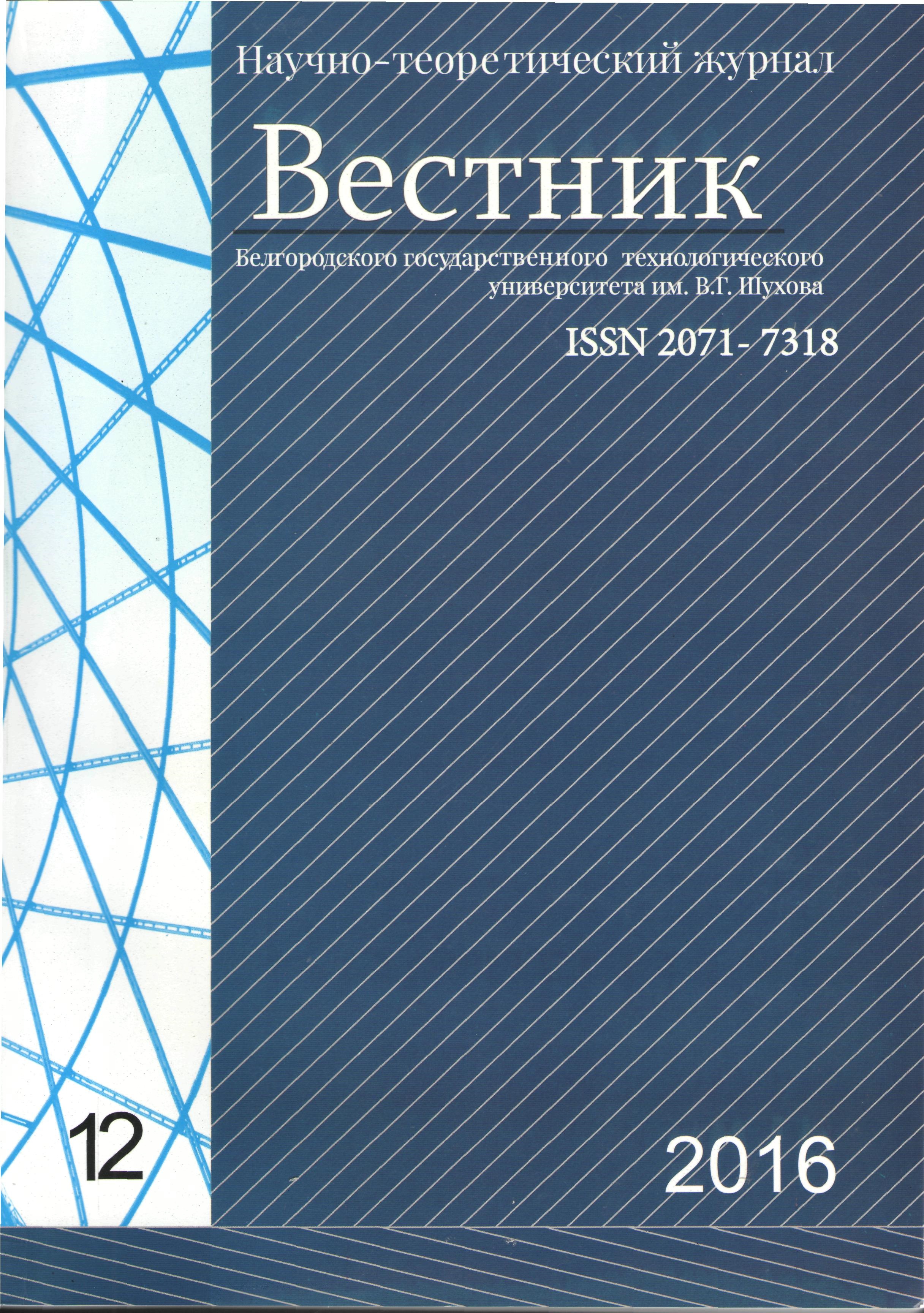Belgorod, Belgorod, Russian Federation
Belgorod, Belgorod, Russian Federation
The technique of developing empirical models wear resistance of carbide inserts for turning of different brands of corrosion-resistant heat-resistant steel 08X18H10T. The experiment was conducted in a production environment using the existing industrial equipment, tooling and tools. As the work piece used Tee - pipeline fittings. A special feature of the experiment was intermittent cutting with impact loads. For the development of models used by the planning of extreme experiments of the second order by rotatable planning. As the study of technological parameters adopted: the supply of cutting tools and cutting speed. The character of wear, the magnitude of the resistance of various grades of carbide inserts with the same process conditions, the effect of the studied set of technological regimes of turning on the wear processes. The developed empirical models enable reasonably assign process parameters to predict the value of the tool life, to carry out optimization of process parameters for a given resistance by the criterion of maximum productivity.
empirical model of wear resistance, tees stamped transition, turning corrosion-resistant heat-resistant steel, resistant carbide tools, optimizing cutting conditions, rototabelnoe experiment planning.
1. Duyun T.A., Grinek A.V., Sakharov D.V. Upravlenie teplovymi parametrami protsessa mekhanicheskoy obrabotki s ispol´zovaniem chislennogo modelirovaniya ikh teplovykh zavisimostey. Promyshlennye kontrollery ASU. 2015. №10. S. 43-50.
2. Sorokin V. G., Volosnikova A. V., Vyatkin S. A. Marochnik staley i splavov M.: Mashinostroenie, 1989. 640 s.
3. GOST 5632-72 Stali vysokolegiro-vannye i splavy korrozionno-stoykie, zharo-stoykie i zharoprochnye Marki. M.: IPK Izdatel´stvo standartov, 1997. 64 s.
4. OST 24.125.16-89 Troyniki shtampo-vannye perekhodnye dlya truboprovodov AES. M.:1991. 5 s.
5. Boyko A.F., Voronkova M.N. Teoriya planirovaniya i organizatsiya mnogofaktornykh eksperimentov. Belgorod: Izd-vo BGTU, 2013. 73 s.
6. Youming Liu, Liuhe Li, XunCai, QiulongChen,MingXu, Yawei Hu, Tik-Lam Cheung, ShekC.,Paul K. Chu. Effects of pretreat-ment by ionimplantation and interlayer on adhesion betweenaluminum substrate and TiN film//Thin SolidFilms. 2005. Vol. 493, Iss 1-2. P. 152-159
7. Nartsev V. M., Zaytsev S. V., Prokhorenkov D. S., Evtushenko E. I., Vashchilin V. S. Zavisimost´ struktury ALN-pokrytiy ot kontsetratsii azota pri osazhdenii na sapfir magnetronnym metodom . Vestnik BGTU im. V.G. Shukhova. 2016. №1. S. 144-149.
8. AnuragSrivastava, BhoopendraDharDi-wan, Structural and elastic properties of ZrN and HfN: ab initio study// Canadian journal of Physics. Volume 92. 2014. 1058-1061
9. Shpur G., Shteferle T. Spravochnik po tekhnologii rezaniya materialov. M.: Mashinostroenie, 1985. 616 s.
10. Stroiber, W. Comminution Technology and Energy consumption. Part 1. Cement Interrational. 2003. №2.
11. Pchelkin V.M. Osobennosti iznosa tverdosplavnykh plastin pri vysokoskorost-noy obrabotke. Obrazovanie, nauka, proizvodstvo. 2015. C. 1703-1707.
12. Rebrova I.A. Planirovanie eksperi-menta. Omsk: SibADI, 2010. 105 s.
13. Spiridonov A.A. Planirovanie eksperimenta pri issledovanii tekhnologicheskikh protsessov. M.: Mashinostroenie, 1981. 184 s.
14. Duyun, T.A., Beshevli O.B. Vliyanie tekhnologicheskikh parametrov na tempera-turnyy rezhim i poluchaemoe kachestvo poverkhnosti pri frezerovanii babbita. Vestnik BGTU im. V.G. Shukhova. 2015. №2. S. 112-117.
15. Rubanov V.G., Bushuev D.A. Modelirovanie ekstremal´nykh sistem upravleniya v srede Matlab i Simulink, kak sredstvo analiza dinamiki. Nauchnye vedomosti BelGU. Seriya: Istoriya. Politologiya. Ekonomika. Informatika. 2012. №19 (138). Vyp. 24/1, S. 169-175














